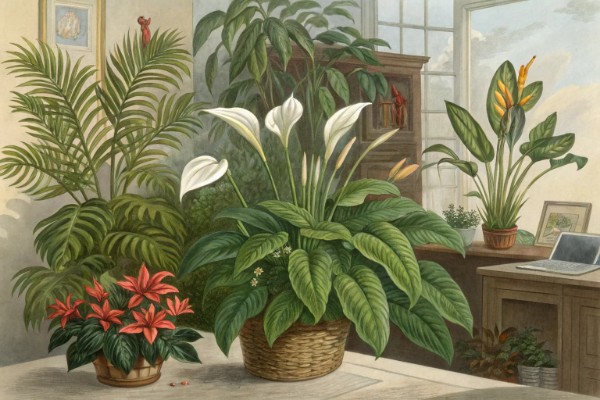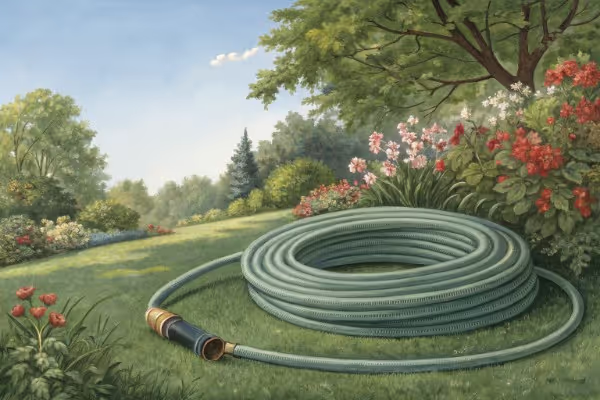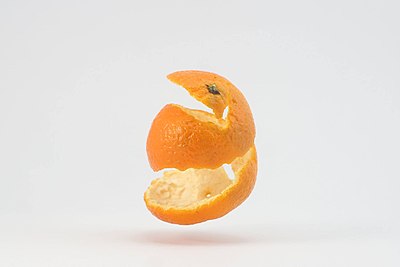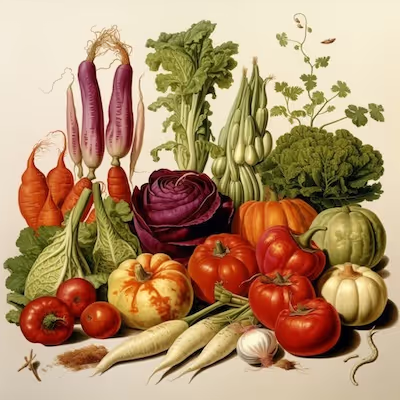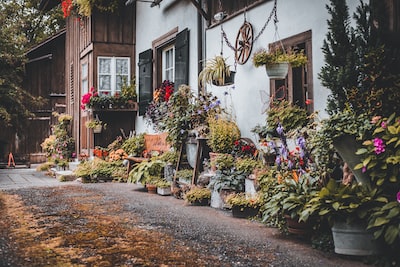Edible Perennials: Create a Self-Sustaining Harvest Year After Year

Edible perennials
Edible perennials return year after year, offering steady harvests with less effort than annuals. Planting edible perennials like asparagus, rhubarb, and sorrel lets you enjoy homegrown flavor and long-term rewards. Skip the endless replanting—these plants settle in and keep producing. Curious which varieties offer lasting taste and stay resilient? Keep reading for proven picks and practical tips on cultivating your own perennial pantry.
Cheatsheet: Growing & Enjoying Perennial Edibles
🌱 Top Picks for Every Garden
- Asparagus: 25+ years harvest, rich in folate
- Rhubarb: Vitamin K, tart stalks for pies
- Jerusalem Artichoke: Nutty tubers, prebiotics
- Chives & Garlic Chives: Perennial seasoning, bee-friendly
- Egyptian Walking Onion: Self-propagates, every part edible
- Sorrel: Lemony, iron-packed leaves
- Berry Brambles: Blackberries, raspberries, jam-ready
- Sea Kale: Coastal, edible shoots and leaves
🔥 Prep & Plant Steps
- Pick full sun (6+ hrs/day) spots with well-drained soil
- Test soil: pH 6.0-7.0 (use a soil test kit)
- Amend with compost before planting
- Plant roots/crowns/seedlings per species guideline (depth, spacing)
- Mulch to retain moisture, suppress weeds
- Water deeply, 1 inch/2.5 cm weekly
- Let establish for 1-2 years before major harvest
🛠 Tools and Products You'll Need
- Sharp spade or garden fork
- Compost or manure
- Mulch (straw, leaves, bark)
- Drip irrigation or watering can
- Bypass pruners for harvest
- Soil test kit
- Starter crowns or bare root plants
- Protective netting for berries
🌍 Health, Nutrition & Sustainability
- Perennials sequester carbon and support pollinators
- Up to 30% higher nutrient density than annuals
- Low-maintenance: fewer inputs, less tilling
- Increases long-term food resilience
- Extend harvest season with strategic plant choices
🍴 Harvest & Enjoy
- Harvest mornings, when dew has dried
- Asparagus: Snip 6-8 inch/15-20 cm spears
- Herbs: Trim outer leaves, allow regrowth
- Berries: Pick when fully ripe for peak flavor
- Rotate harvest to avoid plant stress
- Ongoing harvests for a decade or more
Edible perennials: plant once, harvest for years
I built my first bed of Edible perennials out of impatience, which is funny because patience pays the dividends here. The second spring my asparagus spears popped like champagne corks after rain, and I stopped arguing with the calendar.
"Asparagus plantings can remain productive for 15 to 20 years," Cornell Cooperative Extension notes, "with harvests limited to 6 to 8 weeks per season once established."
Perennial roots stay in place, so soil does not get flipped and frayed each spring. USDA NRCS puts it simply: "Keeping living roots in the soil year round improves soil structure and water infiltration."
Backbone crops that quietly feed you every spring
Asparagus, rhubarb, and berries that refuse to quit
- Asparagus: Plant 1-year crowns 6 to 8 inches deep, 12 to 18 inches apart. Expect 0.5 to 1 pound per plant per season after year 2, with spears best at 50 to 70 F, 10 to 21 C.
- Rhubarb: Give each crown 3 feet by 3 feet, 0.9 by 0.9 m. I harvest 2 to 5 pounds per plant, leaving at least one third of stalks for the plant to recharge.
- Blueberries: Acid soil is nonnegotiable, pH 4.5 to 5.5. Mature bushes return 5 to 10 pounds per plant, and I prune late winter for strong one-year wood.
- Raspberries: Summer and fall types, spaced 2 feet, 0.6 m, in rows. I budget 1 to 2 quarts per plant and renew canes every year.
- Currants and gooseberries: Shade tolerant and polite. Yields range 3 to 6 pounds per bush with minimal fuss.
RHS reminds growers to skip harvesting asparagus the first year after planting, a rule I broke once and regretted. Give perennials a season to knit roots, then they feed you on autopilot.
Perennial greens and alliums for the everyday pan
- Sorrel: Bright, lemony leaves from snowmelt to heat, happiest in partial shade. I divide clumps every 3 years to keep it lively.
- Sea kale: Blanched spring shoots taste like nutty asparagus. Plant crowns in sandy, well-drained soil and mulch deep.
- Perennial kale and tree collards: In mild zones, nonstop leaf harvest. Pinch tips, stake tall stems, and take cuttings for friends.
- Good King Henry: Old cottage green that thrives in cool springs. I pick young shoots and let it rest mid-summer.
- Chives, garlic chives, and Welsh onion: Clumps that never complain. I shear to 1 inch, 2.5 cm, and they bounce back.
- Egyptian walking onion: Sets on top, bulbs below, flavor all season. I corral them with a border to keep order.
These greens hit the skillet fast, and they reshoot after harvest like a reliable bar band. I salt early, then finish with vinegar to keep the greens bright.
Staples with heft: tubers and roots that store calories
- Sunchokes, Helianthus tuberosus: Crisp tubers, big yields, 3 to 6 pounds per plant in rich soil. I plant in a root-control bed to avoid a sunflower uprising.
- Groundnut, Apios americana: Nutty strings of tubers on a vine, needs a trellis. Slow to start, then generous.
- Skirret: Sweet, slender roots that like moisture. I hill soil to blanch the crowns and keep roots straight.
- Chinese artichoke, crosnes: Tiny crunchy tubers, best in loose soil. I grow them in crates for easy sifting.
- Yacon: Crisp, juicy tubers like mild apples, happy in long seasons. Cure a week indoors for sweetness.
Some roots spread, some sulk, so set boundaries with edging or stock tanks. I feed these beds with autumn leaves and woodchip paths that compost in place.
Shade-and-edge specialists that keep the understory busy
- Hosta shoots: Harvest tight rolled shoots, then stop by mid-spring. Treat them like asparagus and never scalp a plant.
- Ostrich fern, Matteuccia struthiopteris: Only this fern for fiddleheads, identify with absolute certainty. Health agencies advise cooking thoroughly, boiling 10 to 15 minutes or steaming 10 to 12 minutes.
- Ramps, Allium tricoccum: Grow from seed or divisions and harvest lightly. I never dig bulbs, just take a leaf or two.
- Daylily buds and flowers: Stir-fry the green buds, sweet petals for salads. Some folks are sensitive, so test small portions.
Edge spaces near fences and hedges can feed you if you match plant to light and moisture. I tuck these into dappled zones that annuals despise.
Herbs that pay rent year after year
- Thyme, oregano, and sage: Prune after bloom to keep woody stems fresh. I replant thyme every 4 years for peak flavor.
- Rosemary: Hardy to about 10 to 20 F, minus 12 to minus 6 C, depending on cultivar. In cold zones, mine lives in a 15 gallon, 57 liter, pot that winters indoors.
- Lovage: Celery on turbo that hits 6 feet, 1.8 m. A single plant flavors an entire kitchen.
- Mint and lemon balm: Incredible as tea, unstoppable in soil. I confine them to containers and bottomless buried pots.
- Bay laurel: Evergreen leaves, container friendly. Protect when temps drop near 20 F, minus 6 C.
Perennial herbs stitch the garden together with pollinator bloom and steady aroma. I place them at path edges to brush and release scent.
Design like a small forest and harvest by layers
Stack heights and seasons so light hits every leaf. I group a dwarf apple with chives at the dripline, comfrey for mulch, sorrel as groundcover, and currants in the shade side.
That guild needs no tilling, just spring pruning and chop-and-drop. Free mulch is my favorite fertilizer.
Buying guide and what the price tag really buys
- Asparagus crowns: Budget 1 to 3 USD per crown. Buy 25 to 50 for a household that loves spears.
- Rhubarb divisions: 8 to 15 USD each, one plant feeds a pie habit. Choose disease-free stock from a reputable nursery.
- Bare-root berries: 3 to 8 USD per cane for raspberries, 12 to 25 USD per blueberry bush. Pick cultivars matched to chill hours and soil pH.
- Hazelnut seedlings: 8 to 15 USD each, plant two or more for pollination. Seedlings bring genetic diversity and resilience.
- Soil test kit or lab test: Worth every dollar before planting blueberries. Aim for pH corrections months ahead of planting.
Read nursery descriptions like a wine label, looking for site, chill, disease notes. I prefer certified stock and cultivars vetted by extension trials.
Soil, water, and mulch that keep perennials humming
Most perennials want drainage and a deep, airy profile, so I loosen soil to 12 inches, 30 cm, then add compost. Blueberries need acidic media, so I blend pine fines, peat or coir, and elemental sulfur based on a lab test.
Mulch 2 to 3 inches, 5 to 8 cm, with shredded leaves or wood chips, keeping stems clear. I irrigate with drip at 0.5 to 1 inch, 13 to 25 mm, per week during establishment, then taper.
Planting calendar by zone band
- Cold winter zones, USDA 3 to 5: Plant crowns and bare-root stock in early spring as soon as soil is workable. Fall planting works for berries once soil cools and rains return.
- Temperate zones, USDA 6 to 8: Fall planting sets roots fast, with spring top-ups. Protect tender newbies from late frost with row cover.
- Warm zones, USDA 9 to 10: Plant late fall into winter. Choose low-chill fruiting types and provide afternoon shade for cool-loving greens.
I chase fall planting whenever possible since roots settle while weeds nap. Spring still works, it just needs more water and attention.
Maintenance in five moves
- Mulch yearly, then topdress compost in late winter.
- Divide clumps like rhubarb, sorrel, and chives every 3 to 5 years.
- Prune berries on schedule, removing old canes and training new ones.
- Edge spreaders and install rhizome barriers where needed.
- Feed lightly with slow-release organic fertilizer after soil tests, never by guesswork.
Perennials like consistency more than coddling. I set calendar reminders and keep it boring, which turns harvests exciting.
Propagation shortcuts that save money
- Division: Rhubarb, sorrel, chives, lovage, daylily, mint. Slice clean with a spade and replant into moisture.
- Cuttings: Currants, gooseberries, rosemary, sage, tree collards. Stick 6 to 8 inch wood in a sand-compost mix and wait.
- Layering: Tip down a cane of blackberry or currant and pin it. Roots form by fall.
- Seed with stratification: Sea kale, some herbs, and woody plants benefit from a chilled period, 4 to 12 weeks at 34 to 40 F, 1 to 4 C.
Propagation turns a single plant into a hedge over a couple of seasons. I label dates and mother plants so I remember which lines perform.
Pests, diseases, and clever deterrents
- Asparagus beetle: I scout daily in spring, hand-pick adults, and crush eggs on spears. A hard spray of water knocks them back.
- Slugs on new greens: Beer traps, copper tape on containers, and morning harvests. Ducks help if your setup allows.
- Rhubarb crown rot: Avoid wet feet, crown at soil level, and mulch around, not on top.
- Voles in sunchokes: Wire baskets in problem beds. Harvest thoroughly to thin food supply.
- Deer pressure: Chives, rhubarb, and currants get ignored here, blueberries get netted. I fence berries and forget about bait sprays.
I rotate mulch types to disrupt pest habitat. Clean prunings leave the property or get hot-composted.
Containers and tight spaces
- Blueberries: 15 to 25 gallon, 57 to 95 liter, pots with acidic media. Water often and feed with sulfur-based amendments after testing.
- Rhubarb: 20+ gallon, 75+ liter, half-barrel with rich, moist soil. Divide every 3 years and refresh media.
- Herbs: Rosemary, bay, thyme, oregano in 5 to 15 gallon, 19 to 57 liter, containers. Use gritty mixes and prune roots during repotting.
- Walking onions and strawberries: Rail planters or 5 gallon, 19 liter, buckets with drip. Replace strawberries every 3 years for vigor.
Container perennials need steady water and feed, so I run a micro drip line on a timer. Mulch the pot surface to keep roots cool.
A proven 10 by 12 foot, 3 by 4 m, bed plan that prints food
North edge: 2 blueberries with a 3 foot, 0.9 m, path, underplanted with thyme. Center: 3 asparagus rows, 18 inches, 45 cm, apart with sorrel down the aisles.
South edge: 2 currants flanking a rhubarb. I tuck garlic chives along the border for nibbling and pollinators.
By year three this bed feeds breakfasts and pie plates for months. Maintenance takes under an hour per month outside of spring.
Safety and cooking notes
- Rhubarb leaves are toxic, compost them, never eat them.
- Fiddleheads must be correctly identified as ostrich fern and fully cooked per public health guidance.
- Sunchokes can cause digestive fireworks, start with small portions and store a week to mellow inulin.
- Sorrel is high in oxalic acid, balance with dairy or rotate greens.
I cross-check identifications with extension publications and field guides before a plant hits the pan. The garden already gives plenty of thrills, I keep dinner predictable.
Top 15 edible perennials for a first build
- Asparagus ‘Jersey’ types or all-male hybrids, where available
- Rhubarb ‘Victoria’ or a local heirloom that neighbors trust
- Blueberry, a southern or northern type matched to your chill hours
- Red currant ‘Rovada’ or white currant ‘White Imperial’
- Gooseberry ‘Hinnonmaki Red’ for flavor and vigor
- Raspberry, one summer and one fall bearer for a long season
- Sorrel ‘De Belleville’ or garden sorrel common type
- Sea kale, from crown or seed
- Tree collard or perennial kale, region allowing
- Chives and garlic chives
- Egyptian walking onion
- Sunchokes, in a contained bed
- Lovage
- Thyme and oregano
- Bay laurel in a pot
I built a second bed from divisions and cuttings of this list in two seasons, total cost near zero. That is the quiet magic of perennials.
Reliable references I use before planting
- Cornell Cooperative Extension, asparagus production and home guides.
- USDA NRCS soil health notes on living roots, cover, and infiltration.
- Royal Horticultural Society profiles on asparagus, rhubarb, and currants.
- University extension cultivar trials for berries matched to chill hours and disease resistance.
- Public health guidance on safe preparation of fiddleheads from national agencies.
These sources keep my notes honest and my plants happy. I trust them before I trust catalog poetry.

Want smarter plant choices? 🪴
Frequently Asked Questions
Which edible perennials thrive in colder climates?
Rhubarb, asparagus, sunchokes, and sea kale handle freezing winters, often surviving temperatures as low as -30°F (-34°C). Choose varieties bred for cold-hardiness to ensure reliable harvests through multiple seasons.
How much maintenance do these perennial crops require compared to annuals?
Edible perennials typically need less frequent soil preparation and fewer plantings than annual vegetables. They benefit from seasonal mulching, periodic division, and occasional pruning. Regular weeding and watering during dry spells support continued vigor and yield.
What soil conditions encourage healthy, productive perennial food plants?
These crops perform best in well-drained, fertile soil with added organic matter. Before planting, incorporate compost or aged manure. Aim for a pH between 6.0 and 7.0. Heavy clay or waterlogged spots often lead to poor growth or root rot.
Can I grow perennial food plants in containers?
Several species, such as herbs (chives, sorrel, oregano) and strawberries, adapt well to containers. Use large pots (at least 12-18 inches wide / 30-45 cm) with free-draining potting mix. Protect roots from severe freezes by insulating containers through winter.
How do I protect edible perennials from pests and diseases?
Rotate plantings every few years, clear away dead foliage, and encourage beneficial insects by interplanting flowers. Slugs, snails, and fungal diseases target tender growth in humid weather. Use row covers, mulch, or organic sprays when needed and keep plants spaced to promote airflow.
When can I harvest these crops, and how do I avoid overharvesting?
Most perennial food plants need at least one full growing season to establish before heavy picking. For instance, begin cutting asparagus lightly in year two, then harvest mature spears in spring for 6-8 weeks each year. Always leave a generous portion of leaves or stems to fuel future growth.
Edible perennials give you more than a good meal—they root your garden in resilience and reward. With asparagus pushing up each spring, rhubarb unfurling after frost, and herbs filling in the gaps, you get both flavors and less work year after year. These plants ask for patience up front, but the payback is steady, reliable food, season after season. If you want even more ideas, check out this garden vegetables list or explore edible ground cover plants for low-maintenance bites. Curious how these plants fit into the bigger picture? This piece on the life cycle of plants breaks it down. Plant them once, and you’ll eat well for years. That’s the quiet genius of edible perennials.
The Prepper’s Guide: Edible Perennials for True Resilience
Perennials anchor a self-sufficient, low-maintenance food system. Their deep roots withstand drought, pull minerals, and bounce back after hard seasons, giving redundancy and food security year after year without fresh seeds.
Up to 80% of modern fruit and nut harvest globally comes from perennial species; resilient edible perennials form a practical, living pantry—especially when supply chains fail or seed access shrinks.
Perennial Powerhouses for Survival Gardens
- Jerusalem artichoke (Helianthus tuberosus): Tubers keep underground at 40–80°F (4–27°C), harvestable through winter zones 3–9. Replant nubs and multiply yield every spring.
- Rhubarb: Survives -30°F (-34°C), high in antioxidants, grows in partial shade, spade a single crown into 12 plants in three years.
- Egyptian walking onions: Self-propagate, survive neglect, produce edible greens and bulblets, even in poor clay soils.
- Perennial kale (Daubenton’s): Lives 5–12 years, cut-and-come-again leaves, tolerates mild frost and coastal winds.
- Asparagus: Edible for decades. Deep roots collect minerals, handle floods and droughts, and offer spears and ferny biomass for mulch.
Layered Planting for Continuous Calories
- Combine tree crops (apples, chestnuts), shrubs (currants, honeyberries), herbaceous perennials (good King Henry, sorrel) and groundcovers (strawberry, creeping raspberry) for non-stop calories and nutrients.
- Plant in guilds: surround a fruit tree with nitrogen-fixing clover, edible chives, alliums, and yarrow for pest protection and soil building.
Food Storage & Perennial Methods
- Use in-ground storage for sunchokes, skirret, and scorzonera—harvest tubers only as needed, extending fresh food through winter.
- Ferment perennial leaves (sorrel, grape) and pickled shoots (hosta, daylily) to preserve minerals through off-season.
Minimum Inputs, Maximum Return
- Mulch thickly: suppress weeds, conserve water, eliminate tilling. Use chopped comfrey or autumn leaves.
- Water deeply but less often: mature perennials survive on 12–20" (30–50 cm) annual rainfall.
- No-chemical regimen: mature plants typically resist most pests; apply wood ash for soil minerals, seaweed for trace elements.
Seed Saving & Propagation
- Split crowns, root cuttings, and offsets ensure a never-ending supply—no need to rely on annual seed companies.
- Exchange tubers and divisions with local gardeners for genetic diversity and barter value.
Perennials mean edible security—set, forget, harvest for decades.
Find out which plants will thrive in your garden!
Answer a few fun questions and get custom plant recommendations perfect for your space. Let’s grow something amazing together!

start your season
